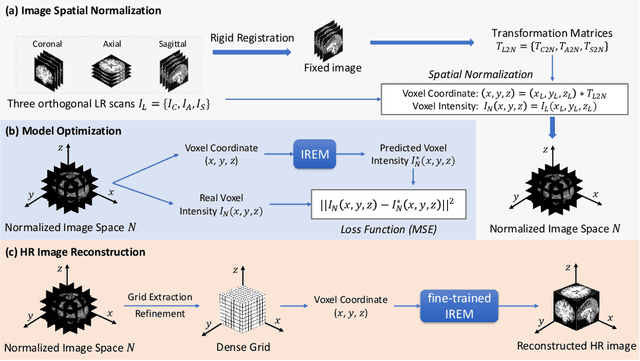Xiaozhao Liu
Mining fMRI Dynamics with Parcellation Prior for Brain Disease Diagnosis
May 04, 2023



Abstract:To characterize atypical brain dynamics under diseases, prevalent studies investigate functional magnetic resonance imaging (fMRI). However, most of the existing analyses compress rich spatial-temporal information as the brain functional networks (BFNs) and directly investigate the whole-brain network without neurological priors about functional subnetworks. We thus propose a novel graph learning framework to mine fMRI signals with topological priors from brain parcellation for disease diagnosis. Specifically, we 1) detect diagnosis-related temporal features using a "Transformer" for a higher-level BFN construction, and process it with a following graph convolutional network, and 2) apply an attention-based multiple instance learning strategy to emphasize the disease-affected subnetworks to further enhance the diagnosis performance and interpretability. Experiments demonstrate higher effectiveness of our method than compared methods in the diagnosis of early mild cognitive impairment. More importantly, our method is capable of localizing crucial brain subnetworks during the diagnosis, providing insights into the pathogenic source of mild cognitive impairment.
IREM: High-Resolution Magnetic Resonance (MR) Image Reconstruction via Implicit Neural Representation
Jun 29, 2021



Abstract:For collecting high-quality high-resolution (HR) MR image, we propose a novel image reconstruction network named IREM, which is trained on multiple low-resolution (LR) MR images and achieve an arbitrary up-sampling rate for HR image reconstruction. In this work, we suppose the desired HR image as an implicit continuous function of the 3D image spatial coordinate and the thick-slice LR images as several sparse discrete samplings of this function. Then the super-resolution (SR) task is to learn the continuous volumetric function from a limited observations using an fully-connected neural network combined with Fourier feature positional encoding. By simply minimizing the error between the network prediction and the acquired LR image intensity across each imaging plane, IREM is trained to represent a continuous model of the observed tissue anatomy. Experimental results indicate that IREM succeeds in representing high frequency image feature, and in real scene data collection, IREM reduces scan time and achieves high-quality high-resolution MR imaging in terms of SNR and local image detail.
 Add to Chrome
Add to Chrome Add to Firefox
Add to Firefox Add to Edge
Add to Edge